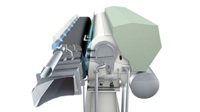Pilot trials
Valmet Paper Technology Center provides the world's most comprehensive offering of testing and piloting services to paper and board manufacturers worldwide. Our pilot facilities have the entire process covered, from stock preparation to coatings and everything between, providing customers with excellent service and reliable results to support investment decisions.
Board and paper








